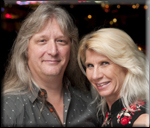We are so excited for Maker Space and expansive thinking!
MEET MIAMI’S FIRSTÂ MAKERSPACE: MIAMI INDUSTRIAL ARTSÂ
 EXPAND
EXPAND
|
From Herring’s Raku demonstration during the Innovation and Engineering Weekend at the Patricia and Phillip Frost Museum of Science.
Courtesy of James Herring/World Red Eye
|
Miami has no shortage of artists and creative types. While there are a lot of homegrown talents living and working here, there is also a large community of transplants looking to evolve artistically in this newish mecca for the arts. With many high-profile events and institutions taking place and hold within this community, it’s easy to lose focus on the nurturing aspects of the arts and the basic elements of creation. “Makerspaces†anyone?
“What we are trying to do here with this collaboration between Miami Industrial Arts and MADE at The Citadel, is nurture creative thinking,†explains master potter James Herring. “These two groups are formed to bring together artists, designers, engineers, craft practitioners, programmers, and makers of every level from amateur to professional in an environment that will foster collaboration, creativity, innovation and entrepreneurship.â€
Herring, the exhibition manager at the Patricia and Phillip Frost Museum of Science, is a well-known practitioner and advocate for pottery. As a man who has worked artistically and professionally with his hands, he understands the necessity for a makerspace in Miami.
A makerspace is an easy solution for those, amateur and professionals alike, who are looking to get back to basics, but can’t afford the tools and hardware that creation necessitates.
 EXPAND
EXPAND
|
James Herring at the wheel during the Innovation and Engineering Weekend at the Patricia and Phillip Frost Museum of Science.
Courtesy of James Herring/World Red Eye
|
“Experiencing the joy of creating is clearly as fundamental to being human as is eating and sleeping,†says Miami Industrial Arts (MIA) founder Paul Thomas. “All across the United States, a revival of the maker identity is taking place. [..]Makerspaces are public workshops, where you can have access to tools and machinery, as well as the knowledge and skills to fuel your learning and creativity.â€
MIA is the first makerspace in South Florida and as such is leading this charge with its 6,000 square feet warehouse housing a fully equipped wood shop, metalworking tools, ceramics area and instructional space for workshops and demonstrations.
What makes a makerspace unique and an attractive option is the ready-made infrastructure that it provides. With membership packages ranging on a dependence on time commitment, MIA offers a great yearlong membership for $110 a month with prices increasing to $150 per month depending on monthly commitment. Even at $150 for a month, the access to tools in a rent-free space is a mere pittance.
MIA’s goal to provide the community a fully operational and funded makerspace can only occur through membership fees and fundraisers. Many in the community have already come aboard and made donations, like Swampspace’s Oliver Sanchez who donated woodturning chisels, and MADE at the Citadel who have joined in creating a Raku evening benefitting the fledgling ceramics studio within MIA.
 EXPAND
EXPAND
|
From Herring’s Raku demonstration during the Innovation and Engineering Weekend at the Patricia and Phillip Frost Museum of Science.
Courtesy of James Herring/World Red Eye
|
“This Raku night is a way to introduce people to ‘learning through making,’†says Herring. “Raku is a traditional Japanese glazing and firing technique first devised in the 16 century to satisfy the needs of the tea masters to the Shogun who was the de facto leader of that nation. The Japanese Tea Ceremony was designed to focus the attention of the participants on the beauty of everyday objects and to remove class distinctions.â€
The  Raku lead event will help fund the ceramics department.There will be ready-made pots for purchase at $15 (or two for $25) that will be glazed, raku-ed and ready to take home that night.
As introduction to the benefits of a makerspace in a community, I’m hard-pressed in thinking of a better one that marries artistry and neighborhood empowerment with the grace of the collaborative spirit; ensuring Miami’s continued vitality as a nest and destination for creative types at any skill level.
Herring puts it best into perspective, “this is a way of bringing people to the space, to raise some funds for the ceramics program and maybe have someone walk away with an object they actually helped create. Often people just need something to get them past the idea that they are incapable of making anything.â€
Raku Night at 6:30 p.m. on Friday, May 1, at Miami Industrial Arts, 300 NW 73rd St., Miami. Call 305-772-5043.

